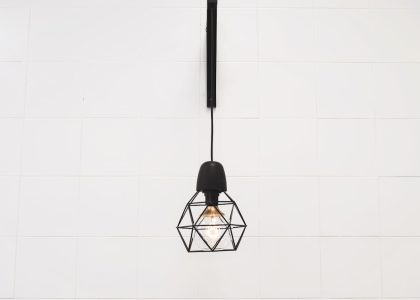The Bauhaus movement, which emerged in Germany in the early 20th century, had a profound impact on the world of design. It revolutionized the way we think about architecture, furniture, and everyday objects. One of the most iconic pieces to come out of the Bauhaus movement is the table lamp. In this blog post, we will explore the origins of the Bauhaus movement, the role of lamolighting lighting in Bauhaus design principles, and the design concept behind the Bauhaus table lamp. We will also discuss its key features, materials used, and its impact on modern design. Finally, we will explore its enduring legacy and influence on contemporary lighting design.
The Origins of the Bauhaus Movement: A Brief History
The Bauhaus movement was founded in 1919 by architect Walter Gropius in Weimar, Germany. It was a school that aimed to unite art and craft, and to create a new aesthetic for the modern age. The key figures of the movement included artists such as Wassily Kandinsky, Paul Klee, and Josef Albers, who taught at the school and helped shape its principles.
The principles of the Bauhaus movement were centered around functionality, simplicity, and the use of modern materials and technology. It sought to break down the barriers between art and design, and to create objects that were both beautiful and practical. The Bauhaus school was known for its interdisciplinary approach, with students learning a range of skills including painting, sculpture, architecture, and furniture design.
The Role of Lighting in Bauhaus Design Principles
Lighting played a crucial role in Bauhaus design principles. It was seen as an essential element in creating functional and aesthetically pleasing spaces. The Bauhaus movement embraced new technologies such as electric lighting, which allowed for greater flexibility in design.
Lighting was used to enhance functionality by providing adequate illumination for specific tasks. It was also used to create a sense of atmosphere and mood in a space. The Bauhaus designers understood the importance of light in shaping our perception of a space, and they used it to create dynamic and engaging environments.
The Bauhaus Table Lamp: A Revolutionary Design Concept
The Bauhaus table lamp was a revolutionary design concept that challenged traditional design conventions. It was designed to be both functional and aesthetically pleasing, with a focus on simplicity and clean lines.
The lamp featured an adjustable arm, which allowed the user to direct the light where it was needed. This was a departure from traditional table lamps, which were often fixed in one position. The adjustable arm gave the user greater control over the lighting in their space, allowing them to create the desired ambiance.
The Key Features of the Bauhaus Table Lamp: Functionality and Simplicity
The key features of the Bauhaus table lamp were its functionality and simplicity. The lamp was designed with a minimalist approach, using simple geometric shapes and clean lines.
The adjustable arm was one of the lamp’s most innovative features. It allowed the user to position the light at different angles, providing flexibility and adaptability. This made it ideal for use in a variety of settings, from reading at a desk to providing ambient lighting in a living room.
The Materials Used in the Bauhaus Table Lamp: A Minimalist Approach

The materials used in the construction of the Bauhaus table lamp reflected the movement’s minimalist approach to design. The lamp was typically made from metal, such as steel or chrome, which gave it a sleek and modern look.
Glass was also commonly used for the shade of the lamp, allowing for maximum light transmission while maintaining a clean and simple aesthetic. The combination of metal and glass created a harmonious balance between form and function.
The Impact of the Bauhaus Table Lamp on Modern Design
The Bauhaus table lamp had a significant impact on modern design, influencing the mid-century modern movement and beyond. Its clean lines, minimalist aesthetic, and focus on functionality were embraced by designers around the world.
The lamp’s influence can be seen in contemporary designs that draw inspiration from its iconic form. Many designers continue to reference the Bauhaus table lamp in their work, paying homage to its timeless design.
The Evolution of the Bauhaus Table Lamp: From Prototype to Icon
The Bauhaus table lamp went through several iterations before it became an iconic design piece. The original prototype was created by Wilhelm Wagenfeld, a student at the Bauhaus school, in 1924. It was later put into production by the German lighting company Tecnolumen.
Over the years, the lamp has undergone minor design changes, but its essential form and function have remained unchanged. Today, it is recognized as a design classic and is sought after by collectors and design enthusiasts alike.
The Legacy of the Bauhaus Table Lamp: A Timeless Design Classic
The enduring legacy of the Bauhaus table lamp can be attributed to its timeless design. Its clean lines and minimalist aesthetic have stood the test of time, remaining relevant and desirable decades after its creation.
The lamp’s functionality and adaptability also contribute to its enduring appeal. It can be seamlessly integrated into a variety of interior styles, from modern to traditional, making it a versatile choice for any space.
The Influence of the Bauhaus Table Lamp on Contemporary Lighting Design
The influence of the Bauhaus table lamp can be seen in contemporary lighting design. Many designers continue to draw inspiration from its iconic form and minimalist aesthetic.
Contemporary lighting designs often feature clean lines, simple geometric shapes, and a focus on functionality. These elements are reminiscent of the Bauhaus table lamp and reflect its enduring influence on modern design.
The Bauhaus Table Lamp in the Home: Practical and Aesthetic Considerations
When incorporating the Bauhaus table lamp into home decor, it is important to consider both its practical and aesthetic considerations. The lamp’s adjustable arm allows for flexibility in positioning the light, making it ideal for use in a variety of settings.
In terms of aesthetics, the lamp’s clean lines and minimalist design make it a versatile choice for any interior style. It can be used as a statement piece in a modern space or as a subtle accent in a more traditional setting.
The Bauhaus table lamp is a design classic that continues to inspire designers today. Its clean lines, minimalist aesthetic, and focus on functionality have made it an enduring icon of modern design. From its origins in the Bauhaus movement to its influence on contemporary lighting design, the Bauhaus table lamp has left an indelible mark on the world of design. Whether used as a functional light source or as a statement piece in home decor, the Bauhaus table lamp is sure to bring timeless style to any space.





